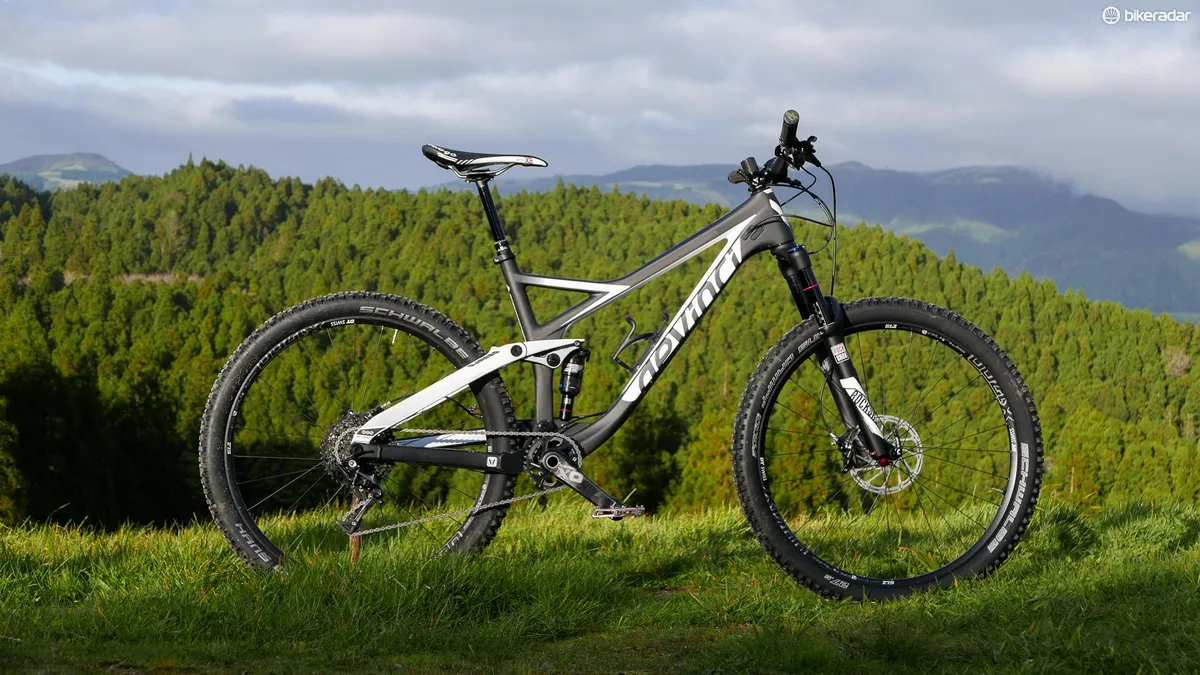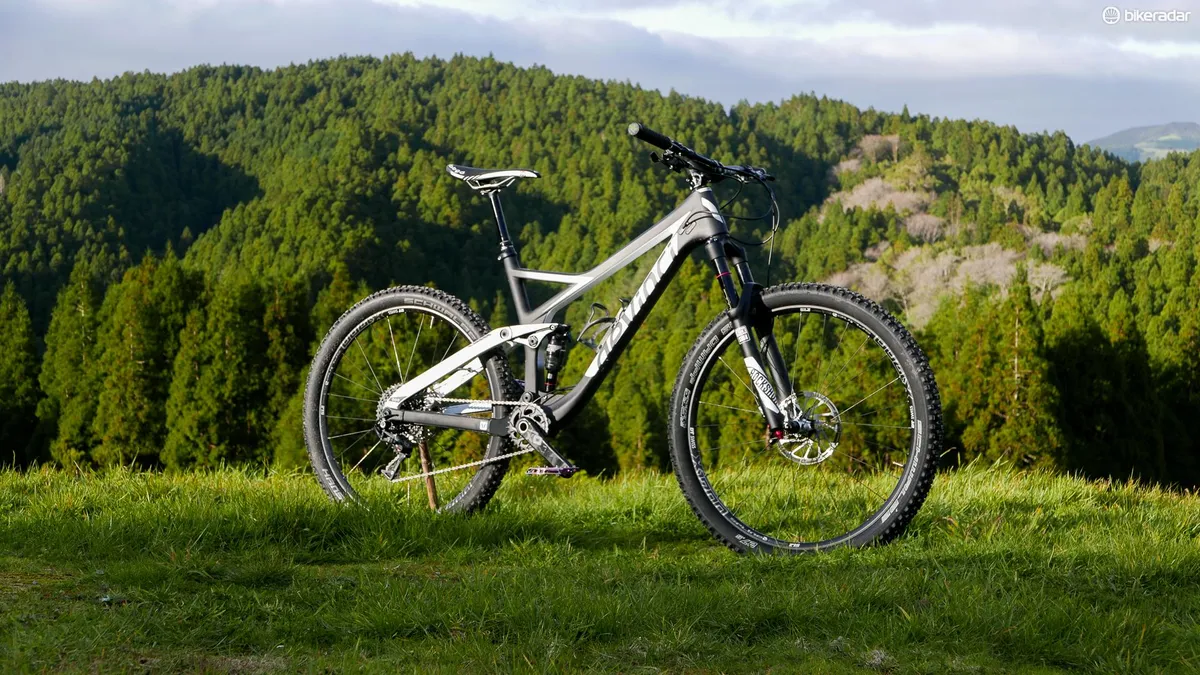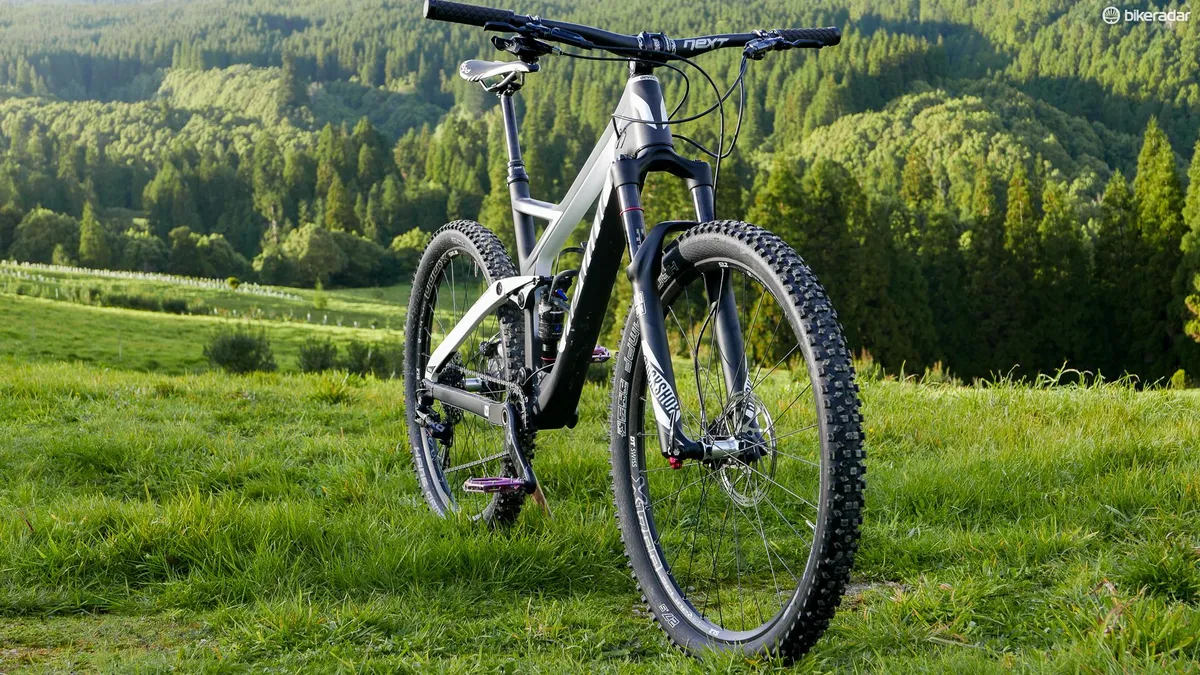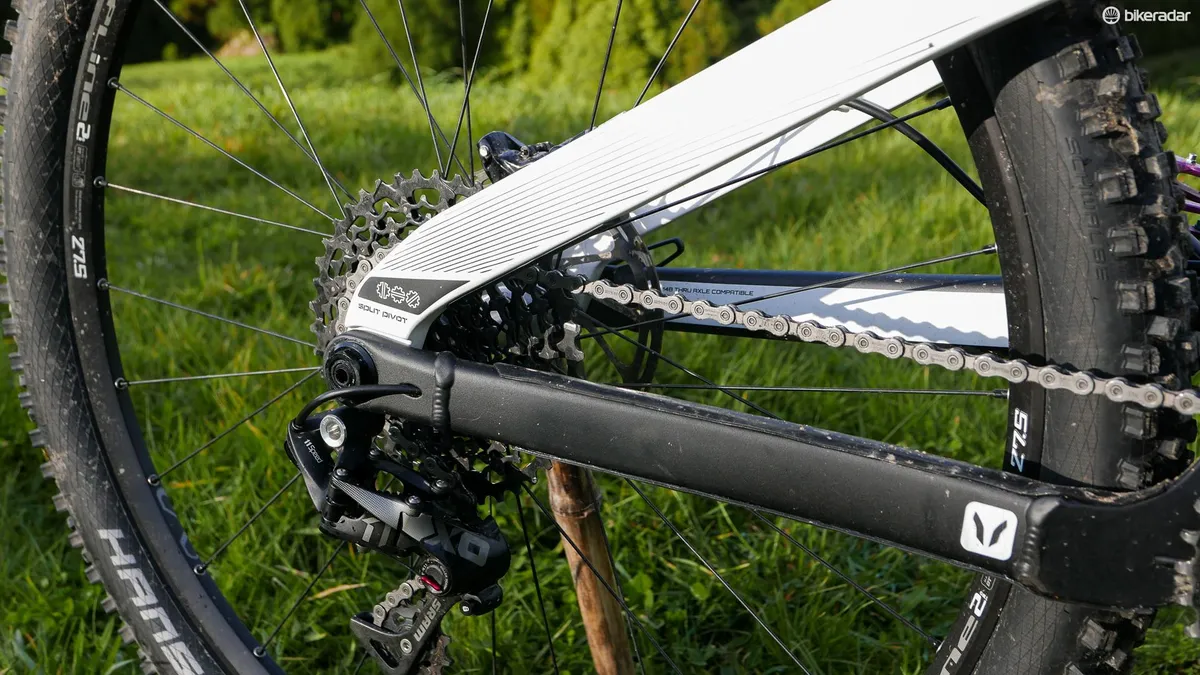This is probably the first bike ever named after a hyper-violent Quentin Tarantino movie, but is this new short travel trail bike from Canada a tale of true love despite the odds or simply pulp fiction?
With a lightweight carbon fibre frame sporting 120mm of rear wheel travel paired to a 130mm fork up front, the idea behind the Django is to unchain (geddit?) you from notions of what a short travel machine can do. Interestingly Devinci has opted for 650b wheels rather than going for the big 29in hoops often seen on shorter travel bikes.
All the build kits in the range save for the entry-level one use RockShox Pike forks to ensure a true-tracking front end, so often a problem with lightweight but long-legged short travel forks. The Django also gets Boost 148 rear axle spacing for a stronger wheel, though none of the forks fitted are Boost compatible. Some classic Devinci features such as the offset shock are present and correct and the detailing on the carbon frame is very neat, with internal cable routing guides that are designed to work neatly with either Euro or moto-style brake setups.

Though we’ve only ridden the Django Carbon, there is also a more affordable alloy version – except in the UK, where only the carbon model will be brought in. Both bikes share exactly the same geometry and come with the same selection of build kits.
Spec selections
The top level XT build kit comes with a Shimano XT 11spd transmission, RockShox Pike RCT3 Dual Air fork and Monarch RT3 shock. You also get DT Swiss X1700 Spline wheels and Reverb dropper post. A Django Carbon RS bike will cost £4999.99 / $5,689.00, while the alloy Django RS will be $5,089.
The Carbon SX build costs £3999.99 / $4,999 and comes with the slightly simpler Pike RC Solo Air fork and a SRAM X1 11spd drivetrain. A slightly heavier DT Swiss X1900 wheelset is matched to Maxxis rubber. The alloy bike will be $4,399.
The RS build uses the less adjustable Pike RC fork and a SRAM GX 1x11spd group. It will cost £3099.99 / $3,789 for the Carbon bike while the alloy machine will be $3,789.
The S build kit is only available on alloy frames and it uses a RockShox Sektor RC Solo Air fork, Monarch RT shock with a Shimano Deore 10spd based drivetrain. It retails for $2,589.
In Australia, the bike is only available as a frame, with the Django Carbon costing AU$3890 and the Django Alloy being AU$2890.

Our test bike had a non-standard spec due to delays in getting components, but it’s broadly representative of the two higher end build kits, with Pike Solo Air RCT3 fork, single ring SRAM X01 drivetrain and Monarch RT3 shock. That, paired with DT Swiss wheels and a great mix of rubber in the aggressive Schwalbe Hans Dampf up front and fast rolling Rock Razor in 2.35in out back, allowed us to concentrate our attentions firmly on the frame.
Splitting the difference
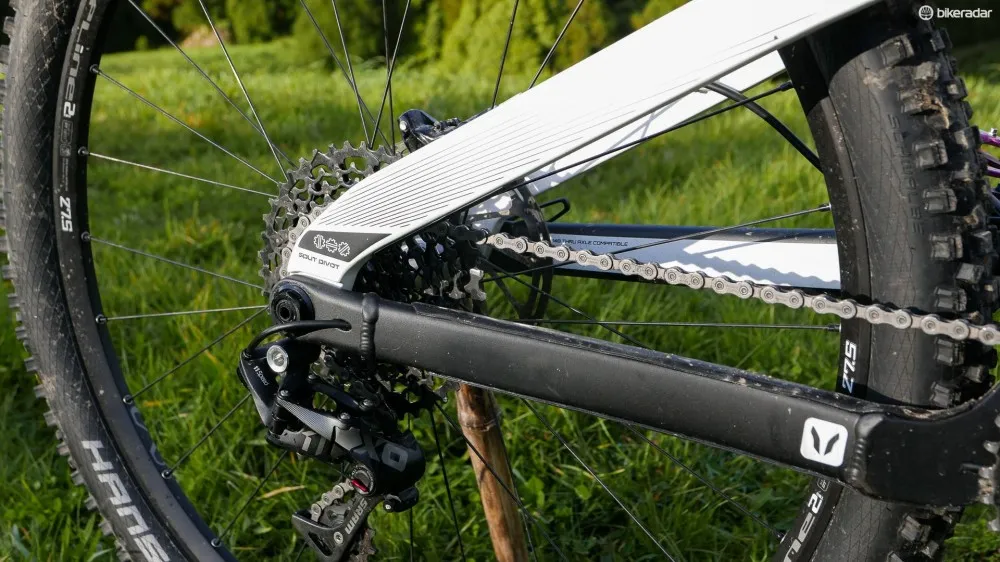
The Django shares the Dave Weagle designed Split Pivot suspension system with the rest of the Devinci range. It’s essentially a single pivot system with linkage driven shock, though differs subtly but substantially in using a concentric pivot around the rear axle to help eliminate braking induced forces on the suspension. That means the bike stays more active under braking, giving better grip.
Pedalling performance is also high on the list of suspension characteristics, with a high degree of anti-squat in the design, meaning that it stiffens up as you pedal. If you’re a pedal smashing sprinting machine, it certainly makes the bike feel taut and lively while you’re on the power but the trade-off is a considerable amount of chain growth and therefore pedal kickback during impacts.
That’s rather noticeable when descending in sustained chattery or rough terrain but time you lose there is made up on fast flowing singletrack, where the bike has a razor-sharp launch response if you even dare think about pressing on the pedals. How much this is a benefit or a hindrance really depends on what sort of terrain you think you’ll be tackling on a bike like this and whether you value plough-through potential over perky pedalling manners.
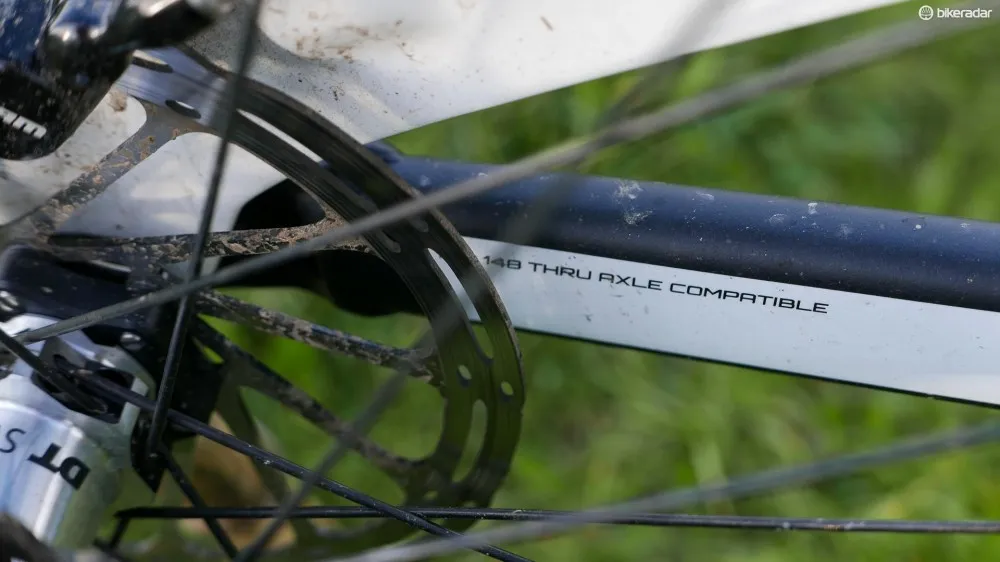
That said, the rear travel is metered out effectively, never crashing through all the travel in a hurry and maintaining composure no matter how the trail tries to trick it. It’s really extremely surprising just how hard you can push the bike, though eventually the truism that ‘ain’t no replacement for displacement’ becomes apparent when it starts getting really wild. Those limits are surprisingly deep however, allowing us to hit some really rather steep and rough trails before we wished we were on a bigger bike.
As ever, the Pike fork does sterling work in short-travel guise, the air of solidity and confidence aided by the stiff and sturdy frame. It was especially noticeable that the broad tubed back and squared off mainframe tubes tracked true when the bike was cranked over in the corners, holding a line without fuss or flex. The carbon frame is no featherweight but certainly flatters you up the hills too, being a claimed 225g lighter than the Troy Carbon at 2.95kg. The alloy version carries a 550g penalty but both get a lifetime warranty suggesting a fair amount of confidence in the bike’s durability.
The magic numbers
The frame geometry is very similar to its 140mm travel sibling the Troy. The Django does have slightly shorter chainstays at 427mm or 425mm depending on whether you’ve got the neat flippable chips in the seatstay/rocker link junction in the low or high position. In high, those chips also alter head angle by half a degree from 67.5 to 68 degrees, while the bottom bracket is simultaneously altered from 334mm to 340mm. With a medium measuring up with a 440mm reach, I opted for a size Large frame for a bit more space on the bike.
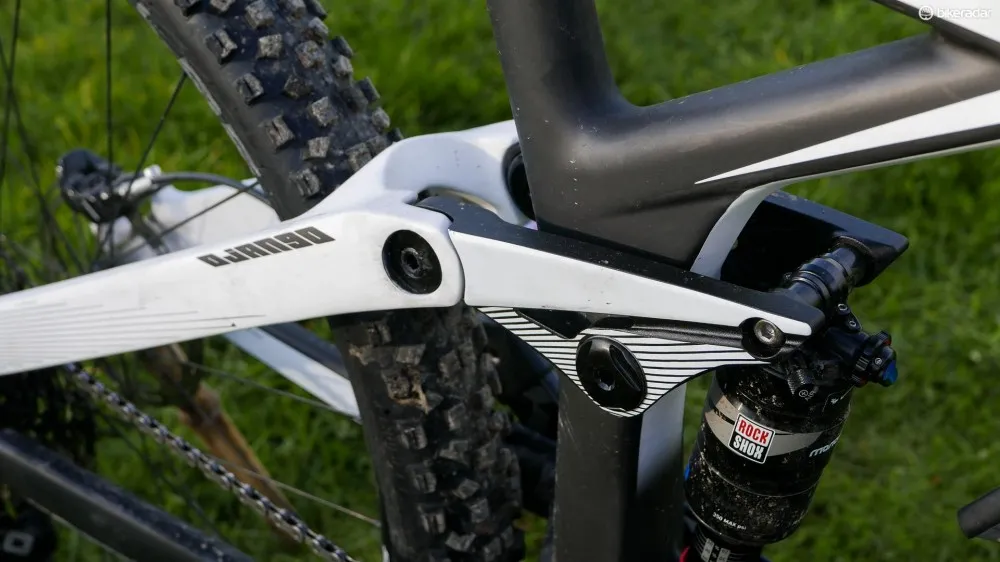
While the geometry isn’t as aggressively long and slack as short travel bikes from some brands such as Whyte’s T130, it’s a balance between having a lively ride feel but enough stability to allow you to push on harder terrain. That said, if your rides mostly consist of plummeting down mega steep and rough trails, this was never going to be the bike for you.
Yes, it can take on trails that seem above its pay grade and fire you out the other side but the Django’s strength is more in its all-round ability. If you’re after a bike that can take on a huge spectrum of riding and you can get on with the suspension feedback, you’ll probably want to chain the Django back up.
